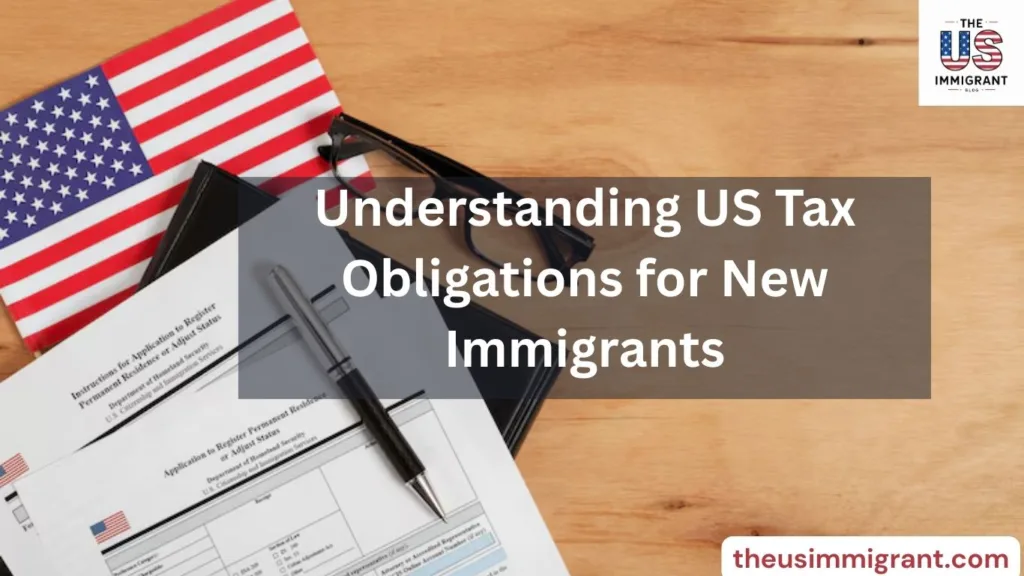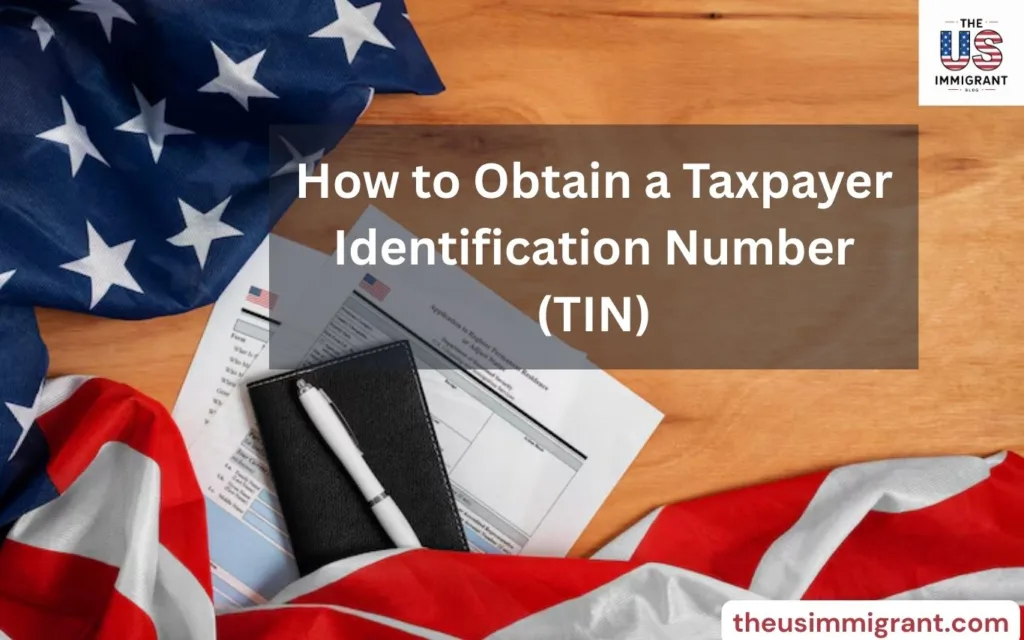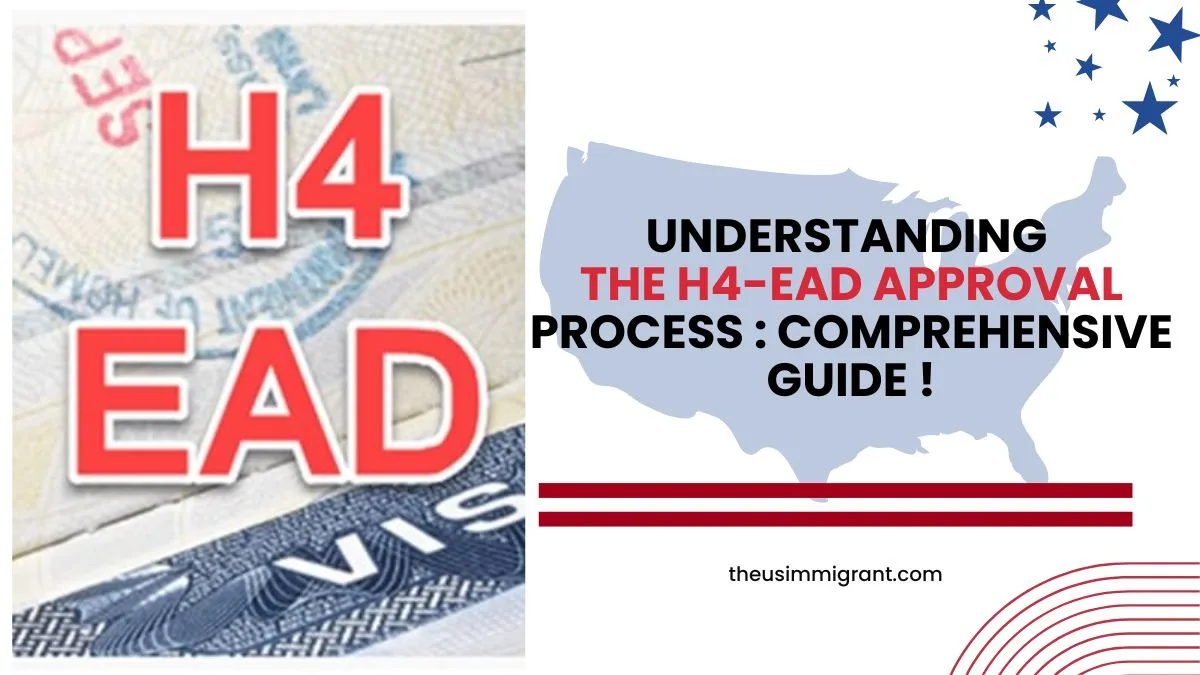Introduction
Starting a new life in the United States?
That’s a huge step that comes with a lot of paperwork, responsibilities, and systems to understand.
The US tax system is one of the most important (and, honestly, most confusing).
Many new immigrants think taxes are just about filing once a year. But the U.S. tax system touches nearly every part of your financial life—from your paycheck to your shopping, property, and even the money you send back home. And if you don’t know the rules? You might end up paying penalties, losing refunds, or worse—getting into trouble with immigration authorities.
We’ll cover everything from tax types to deadlines to getting your tax ID.
Take your time with this.
Bookmark it.
Refer back to it.
Taxes are one of those things you want to get right.

Overview of the US Tax System
Let’s get the basics out of the way. The US tax system has a progressive income tax system, which means:
- The more you earn, the higher your tax rate.
- You’re taxed in brackets—only the income within each bracket is taxed at that rate.
1. Example of 2025 Tax Brackets for Single Filers:
| Tax Rate | Income Range |
| 10% | $0 – $11,600 |
| 12% | $11,601–$47,150 |
| 22% | $47,151–$100,525 |
| 24% | $100,526–$191,950 |
| 32% | $191,951–$243,725 |
| 35% | $243,726 – $609,350 |
| 37% |
$609,351+ |
Tip: Don’t confuse this with “all your income gets taxed at 22%.” Only the portion within that bracket does.
You need to understand the US Tax system in a detailed manner. Knowing the US CORPORATE TAX RATE can help you plan financially if you’re opening an LLC, S-Corp, or C-Corp.
2. Key Agencies
- IRS (Internal Revenue Service):- The federal tax authority.
- State Tax Departments: Each state may have its taxes.
- Local Cities or Counties:- Some cities add small local taxes, too.
3. What’s Taxed?
In most cases, everything.
- Salary, freelance income, interest, investments, and rental income
- Even money earned outside the U.S. (if you’re a resident)
- New immigrants often forget this: If you’re considered a US tax resident, you must report worldwide income.
4. Important Tax Deadlines
Tax Type | Deadline |
Federal Income Tax | April 15 (for prior year’s income) |
Extension Deadline | October 15 (if you file for an extension) |
Estimated Taxes (if self-employed) | Quarterly: April 15, June 15, Sept 15, Jan 15 |
You can check your tax return status on the IRS website if you’ve already filed.
Also Read: Understanding the US Banking System for New Immigrants!

Different Types of Taxes in the U.S.
Here’s a practical breakdown of all the major types of tax you, to understand the US tax system, may come across:
1. Income Tax
- Federal Income Tax: It applies to nearly everyone. It’s what the IRS collects.
- State Income Tax: Not all states have one. Some states, like Texas, Florida, and Nevada, have no income tax.
- Your US tax bracket depends on income, filing status, and deductions.
2. Payroll Taxes
These are taken directly out of your paycheck.
- Social Security Tax (6.2%)
- Medicare Tax (1.45%) Your employer matches these amounts. If you’re self-employed, you pay both sides (ouch, I know!).
3. Sales Tax
Every time you shop—yes, you’re likely paying this.
- Rates range from 0% (Delaware) to 10%+ (some parts of California).
- Check your local rate with a sales tax calculator online.
4. Property Tax
If you buy a home, as per the US tax system, you’ll pay an annual tax to your local government.
- It funds schools, roads, and public services.
- Based on your property’s assessed value.
5. Estate and Gift Taxes
These apply to large inheritances or gifts.
- Federal estate tax applies only to estates over $13.6 million (2024).
- Some states have their own lower thresholds.
Also Read: How to Improve Your Credit Score Fast – Proven Methods!

Determining Tax Residency Status
This part trips up a lot of new immigrants, especially those who have just arrived or are working on temporary visas.
There are two main tests to determine if the IRS sees you as a resident or nonresident for tax purposes:
1. Green Card Test
- If you have a green card at any time during the year, you’re a resident person in the US for tax purposes.
- This means you must report and pay U.S. taxes on worldwide income, as per the US Tax System.
2. Substantial Presence Test (SPT)
You are a US tax resident if you:
- Were in the U.S. for at least 31 days this year, and
- Were present 183 days over the past 3 years (counted as all the days this year + 1/3 of the days last year + 1/6 of the days 2 years ago).
Example: If you were here 120 days each year for the last 3 years, you meet the test.
3. Dual-Status Taxpayer
In the year you move to or from the U.S., you may be both:
- A nonresident for part of the year, and
- A resident for the rest.
You’ll need to file a dual-status return with two parts. It’s tricky, and you may want a tax pro for this.
4. US Tax Implications for Nonresident Persons
If you’re a nonresident person:
- You only pay U.S. taxes on U.S.-sourced income.
- You must file Form 1040-NR.
- You can’t claim standard deductions unless you’re from India (thanks to a tax treaty).

How to Obtain a Taxpayer Identification Number (TIN)
To file a tax return, claim a refund, or even start a job, you’ll need a TIN. There are two common types:
1. Social Security Number (SSN)
- Needed if you work legally in the U.S.
- Used by employers, banks, and for taxes.
- Apply through the Social Security Administration (SSA).
- You’ll receive a card with a 9-digit number.
2. Individual Taxpayer Identification Number (ITIN)
- For immigrants who can’t get an SSN.
- Issued by the IRS.
- Used to file US taxes, claim certain credits (like the Child Tax Credit), or support a dependent’s visa.
3. How to Apply for an ITIN:
- Complete Form W-7
- Provide a valid foreign passport or government-issued ID
- Include it with your first tax return
- Send to the IRS, or apply through a Certified Acceptance Agent
Pro Tip:
If you’re working but don’t have a legal work status yet, don’t avoid taxes. You can still file with an ITIN, and filing taxes honestly may help your immigration case down the line.
Filing Your First Tax Return
Filing your first US tax return as a new immigrant can feel overwhelming, but don’t worry—you’re not alone. Here’s a step-by-step guide to make it manageable:
1. Necessary Documents
Before you start, gather these essentials:
- Form W-2: If you were employed by a company.
- Form 1099: If you did freelance or contract work.
- Form 1042-S: For foreign students or scholars.
- Social Security Number (SSN) or ITIN.
- Receipts: For deductible expenses (education, donations, etc.)
- Passport and Visa copies (for status verification if needed).
2. Choosing the Correct Tax Form
There are a few forms, and picking the right one matters:
|
Form |
Purpose |
|
Form 1040 |
Standard tax return for most residents |
|
Form 1040-NR |
Used by nonresident Persons |
|
Form 8843 |
Used by students/trainees to explain visa status |
3. Determining Filing Status
Your filing status affects your US tax rate and deductions. You’ll fall into one of these categories:
- Single
- Married Filing Jointly
- Married Filing Separately
- Head of Household (you support a child or relative)
- Qualifying Widow(er)
Choosing the correct one can increase your refund or reduce taxes.
- Calculating Taxable Income
This part includes:
- Total income
- Minus any adjustments and deductions
- = Taxable income
Use the latest tax brackets (2025) to calculate your owed tax.
4. Applying Tax Credits and Deductions
Now the good part—reducing your tax!
Some popular ones include:
- Earned Income Tax Credit (EITC)
- Child Tax Credit
- Education Credits
- Foreign Tax Credit
- Many new immigrants miss out on credits they qualify for. Make sure to explore each carefully.
5. How to File
You’ve got two choices:
- E-File (recommended for speed and accuracy)
- Paper file (mailing forms to the IRS—takes longer)
You can track your tax return status at IRS.gov after you file.
Also Read: Best Credit Cards for Immigrants in the US – Build Credit the Right Way!

Key Deductions and Credits Available to New Immigrants
Now let’s dive into what can save you money on your return. These are some of the most important tax breaks provided by the US Tax System:
1. Standard Deduction
This is the easiest way to lower your taxable income:
- For 2025, the standard deduction for single filers is $14,600.
- For married filing jointly: $29,200
You can choose to itemize deductions instead (medical expenses, mortgage interest, etc.), but most new filers take the standard one.
2. Earned Income Tax Credit (EITC)
This credit helps low- to moderate-income workers:
- You must have earned income.
- You need a valid SSN (ITIN not eligible).
- The credit amount depends on income and the number of children.
- Can be worth up to $7,000+.
- Don’t miss this! It’s one of the most generous credits available.
3. Child Tax Credit (CTC)
This credit helps if you have dependent children under 17.
- Worth up to $2,000 per child
- Partially refundable even if you owe no US tax.
Your child must have an SSN.
4. Education Credits
If you’re going to school or paying for a dependent’s education:
|
Credit |
Max Amount |
Eligibility |
|
American Opportunity Credit |
$2,500/year |
For the first 4 years of higher ed |
|
Lifetime Learning Credit |
$2,000/year |
For any post-secondary education |
Save your tuition receipts (Form 1098-T) and any other school-related documents.
5. Foreign Tax Credit
If you earn income in another country, this prevents double taxation.
- Use Form 1116
- You’ll need proof of taxes paid abroad
- This is especially helpful for immigrants with rental or business income in their home countries.
6. State-Specific Credits
Each state offers unique deductions—some for renters, students, or low-income residents. Check your state’s Department of Revenue website.
Tips for Choosing the Right US Tax Preparation Provider
Whether it’s your first year or fifth, getting the right help can make all the difference.
1. Certified Tax Professionals
You want someone legit. Look for:
- CPA (Certified Public Accountant)
- Enrolled Agent (EA)
- Registered Tax Return Preparer (RTRP)
Verify credentials at irs.gov
2. Avoiding Tax Scams
Common red flags:
- Promises of “big refunds” before seeing your info
- Asking to sign blank forms
- Charging fees based on your refund
Trust your gut. If something feels off, walk away.
3. Comparing Services
Option | Pros | Cons |
CPA | Personalized, reliable | More expensive |
Tax Software (TurboTax, H&R Block) | Easy and quick | Cost varies |
IRS Free File | Free if income < $79,000 | Not very user-friendly |
Local Community Centers | May offer free help | Limited availability |
4. Understanding Fees
Ask upfront:
- Is it a flat fee or based on complexity?
- Any extra cost for ITIN filing or state returns?
- Do they offer audit protection?
- A little extra for a professional can save you hundreds—or even thousands—later.

Tips for Filing US Taxes Yourself
Want to handle things solo? Here’s how to make it stress-free:
1. Use IRS Free File
As per the US Tax system, if you earn under $79,000/year, you qualify for Free Tax USA-style filing through the IRS Free File program—a set of software tools offered through the IRS.
- Includes e-filing
- Some allow you to file state returns, too
Visit freefile.irs.gov
2. Commonly Overlooked Deductions & Credits
- Student loan interest
- IRA contributions
- Charitable donations
- Educator expenses
- State/local income or sales taxes
3. Step-by-Step for E-Filing
- Collect documents (W-2s, 1099s, receipts).
- Choose your filing status.
- Use tax software or IRS Free File.
- Input income and deductions.
- Review for errors.
- E-file and print a copy for records.
4. Record Keeping & Audit Protection
Keep these for at least 3 years:
- US Tax returns
- W-2s, 1099s
- Receipts and proof of deductions
Tip: Scan and save copies to Google Drive or Dropbox—just in case.
Also Read: How to transfer money from the US to India: Affordable & Fast Options!
Common Mistakes to Avoid
Let’s wrap this section up with the biggest errors new immigrants make—and how to avoid them:
1. Failing to Report Worldwide Income
If you’re a resident, you must report ALL income, even if it’s from your home country. The IRS takes this very seriously.
2. Choosing the Wrong Filing Status
Filing as single when you should be married, filing jointly, or head of household can cost you thousands in refunds.
3. Missing Out on Credits
Not checking your eligibility for:
- Child Tax Credit
- EITC
Education credits can mean losing thousands in benefits.
4. Filing Late or Missing Deadlines
The most important question every taxpayer asks is, “When are taxes due?” The US tax deadline is April 15, 2025.
- File an extension if needed (Form 4868).
- Late filing = penalties + interest.
5. Ignoring State Tax Requirements
Even if your state has no income tax, others like California or New York are strict. These are states with no income tax: Florida (0%), Texas (0%), Nevada (0%), Washington (0%), South Dakota (0%), Alaska (0%), Wyoming (0%), Tennessee (0%, no earned income tax), and New Hampshire (0%, only on dividends/interest).
Final Thoughts…..
Navigating the US tax system as a new immigrant can be tricky, no doubt about it. But understanding it step-by-step can make a big difference—not just in filing the right way, but also in keeping more of your hard-earned money.
And remember: The IRS isn’t out to get you. Their goal is to collect taxes, yes, but also to help taxpayers comply. They have Free File options, live help, and IRS-certified volunteers ready to assist. So don’t panic—educate yourself, keep good records, and reach out for help if you need it.
You’ve got this. Filing taxes isn’t just a chore—it’s a key part of building a new life in the U.S.
Explore our blog (www.theusimmigrant.com) for trusted, easy-to-understand guides on U.S. immigration and life in America. We’re here to help you every step of the way—because every immigrant deserves clear answers and support.
Frequently Asked Questions (FAQ's)
- Do new immigrants have to file taxes?
If you’re a tax resident (Green Card holder or pass the Substantial Presence Test) or earned U.S. income, you must file.
- Can I get a refund if I overpay taxes?
If too much tax was withheld or you qualify for credits, you may get a refund. File your return to claim it.
- What happens if I don’t file taxes?
You could face penalties, interest, or issues with immigration. Even if unsure, it’s safer to file.
- Can nonresident persons claim deductions?
Yes, but only limited ones tied to U.S.-sourced income. Tax treaties may offer more.
- Where can I find free tax help?
Try IRS Free File, VITA, or local community centers. These offer great support, especially for first-timers or low-income filers.




